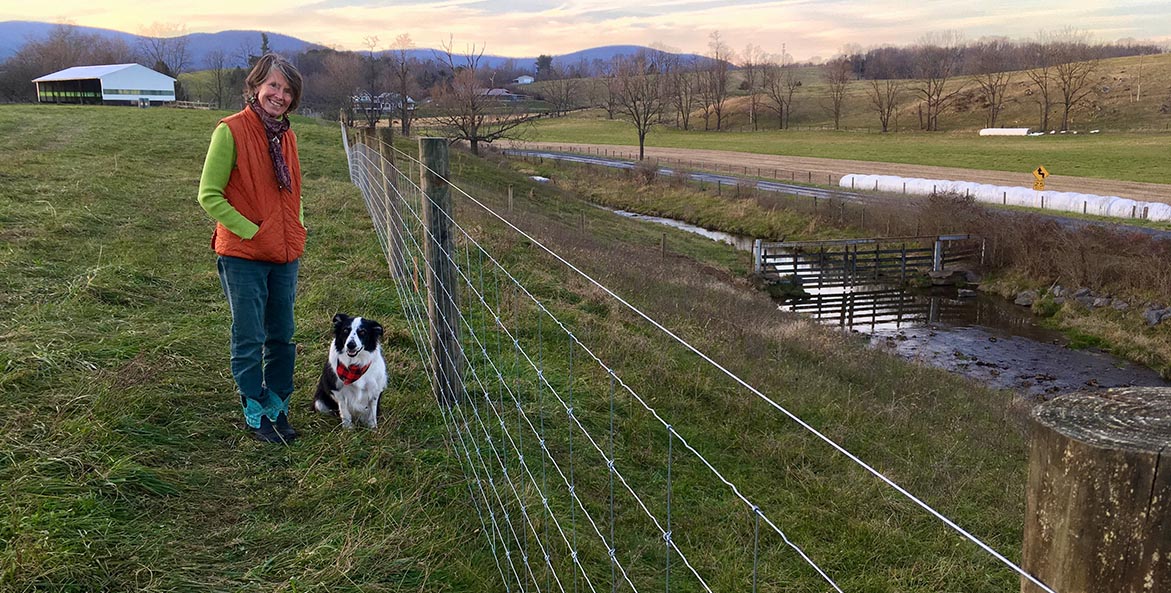This post was originally published in the Richmond Times-Dispatch on February 12, 2023.
In 2015, when Virginia offered funding to cover the full cost to farmers for fencing cattle out of streams, Bill Braford saw opportunity. Braford raises and sells about 40 calves a year on the 250-acre farm he runs with his wife, Lea, in Natural Bridge Station, less than a mile from the upper James River, in Rockbridge County.
With the benefit of state support, the Brafords fenced their livestock from nearby streams, planted buffers of trees and began rotational grazing. Those projects are leading to cleaner water and more cooling shade, and they help the Braford farm business by reducing feed costs under the new grazing system.
This year could open significant opportunities for more farmers to improve their business operations while working for cleaner water. Legislators are currently considering several important proposals. They are looking at increasing investment in the Virginia Agricultural Cost-Share Program as well as creating a program designed to incentivize farmers to adopt the practices—stream fencing, forested streamside buffers, and nutrient management plans—that are most cost-effective in reducing pollution.
In recent years, Virginia has made progress in reducing pollution, notably through upgrading sewage treatment plants. But much work remains. Now, about 90 percent of the pollution reductions Virginia needs to meet its water quality goals must come from agriculture. Meeting that goal will require fully funding the agricultural cost-share program and also taking complementary but innovative approaches to incentivize and accelerate pollution reduction.
On some farms, livestock are allowed to wade into streams, trampling stream banks, muddying the water and adding urine and feces that wash downstream. Fencing cattle out of streams and adding alternative watering systems are among the most effective ways to keep soil, fertilizers and animal waste on land and out of the water. After installation of fencing, buffers of trees and plants that grow along waterways absorb and filter runoff before it reaches streams.
The projects on Braford’s farm mean cleaner water flows down the two streams on his property and into the James River. Braford reflected that his work helps create a healthier James River in Richmond, where his son lives near the water. “This is appealing to all Virginians, everyone living downstream,” Braford said.
Projects like Braford’s also benefit the local economy, providing business opportunities for lumberyards, contractors who install fencing, and nurseries that grow trees. Every dollar spent supporting farm conservation projects returns $1.75 in higher sales and earnings across the Chesapeake Bay watershed, supporting 6,673 jobs, according to a recent economic report.
For decades, the Virginia Agricultural Cost-Share Program has helped farmers reduce pollution to waterways. But until 2022, the program had never been funded at the level needed to meet Virginia’s pollution-reduction commitments. This year, legislators are poised to vote on appropriating an additional $137 million to fully fund the program through the end of fiscal year 2024.
Much of this funding supports annual farm practices, such as cover crops, which have environmental benefits but must be replenished every year. Legislators are also considering a budget proposal that would provide grants to incentivize the most cost-effective long-term farm conservation projects. The $12.9 million in this fund would be set aside specifically for fencing cattle from streams, planting forested buffers and implementing other practices that can provide benefits for years.
For Braford, nearly eight years after fencing cattle from the streams, he is only more convinced that this was the right way to go. Last year, he planted 560 stream-side trees with support from the cost-share program and the Chesapeake Bay Foundation through the James River Buffer Program.
Soil and Water Conservation District staff were also key in designing the fencing and watering system that improves his farm operation while reducing pollution.
“I was dependent on two things: the funding and the expertise to put the practices in place,” Braford said. “I would not have done it, and I would not have thought about doing it the way it was done, if it wasn’t for state support.”
This month, legislators can help thousands more farmers across Virginia ensure cleaner water for millions of people downstream, and healthier rivers and streams for future generations.




